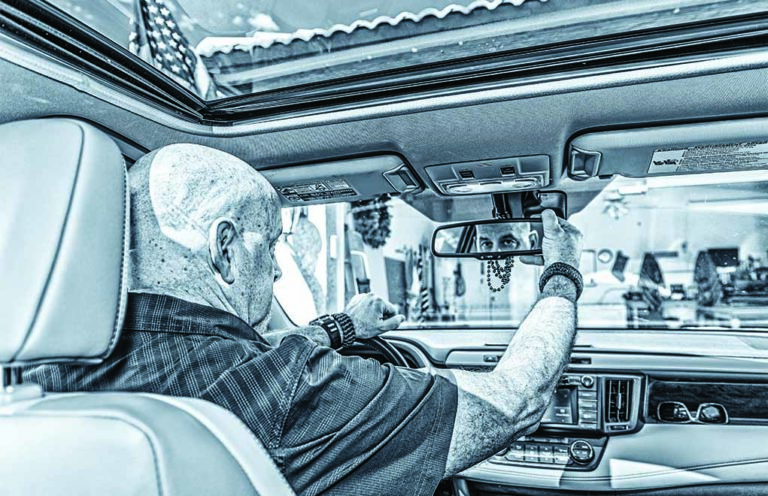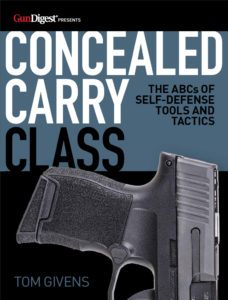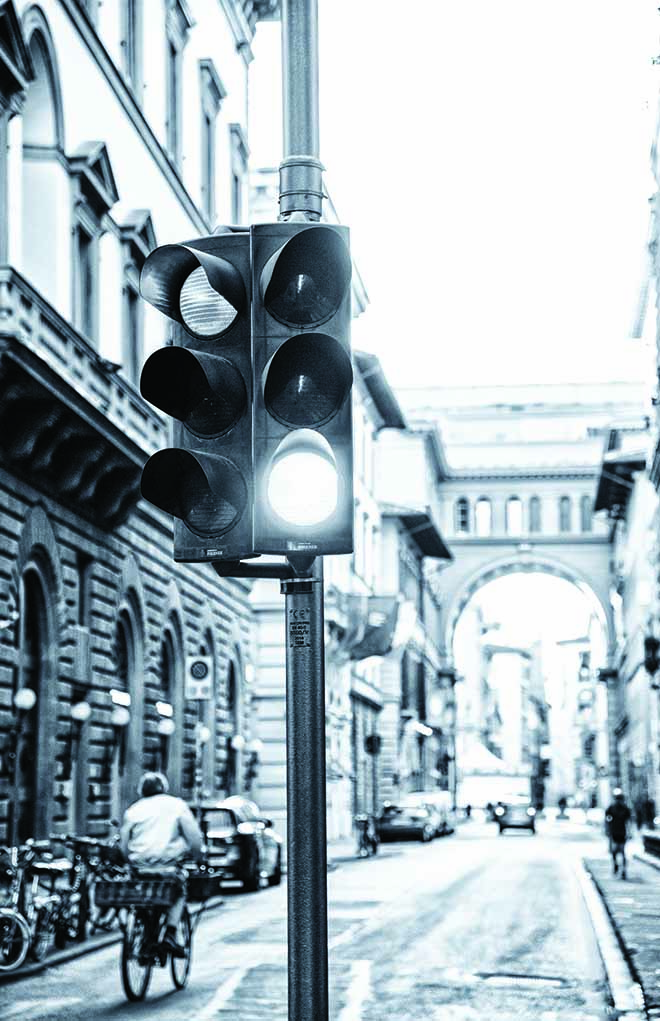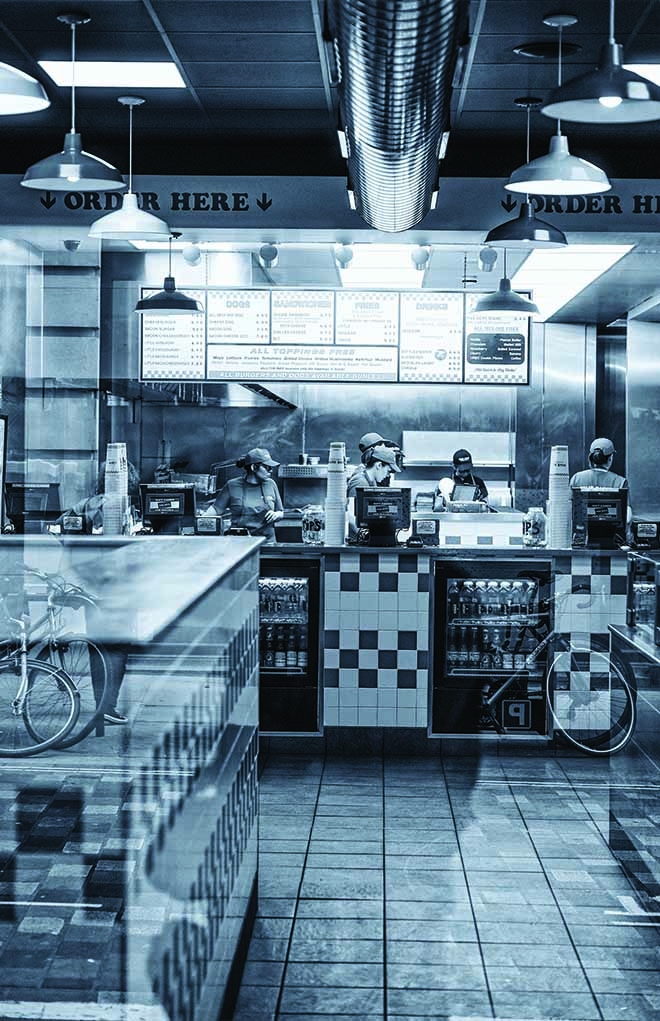
Situational Awareness is your most powerful defensive tool. Treat it that way and enhance it for a life-saving advantage.

The single most important element in your survival is a cultivation of your situational awareness skills. Many people don’t realize their situational awareness skills are more important than their marksmanship skills. Well, you can’t shoot something you don’t know is there or don’t know it needs to be shot.
Situational awareness and alertness are not, for most people, innate behavior traits. This is a learned behavior pattern and, like most skills, it is best learned through repetition. Make a conscious effort at first to be more aware and see the details around you. After a few weeks of effort, it will become second nature.
You should have been taught this as a child, but unfortunately, most children now are not taught this or other vital social skills. One thousand years ago, all children were taught at a very early age to be situationally aware, alert and in tune with their surroundings. If they were inattentive, they might get eaten. One hundred years ago, children were taught to be aware and pay attention to their surroundings, or the hay bailer might tear off their arms and legs. In our time, if you fail to pay attention to your surroundings, someone might cut your throat. Each example is simply a different manifestation of the exact same problem.
On the street, you must be aware of your environment. If you know who is around you and what they are up to, you are in charge. If you do not know who is around you and what they’re up to, you are meat. It’s that simple.
When you walk into a room, scan around and see who is in it besides you. Don’t be surprised by someone you did not see. When walking on the sidewalk, glance into storefront glass and see who is behind you. Get your head up, open your eyes, and look around.
Advanced Self-Defense Training:
- 7 Steps To Control Fear And Make Sound Decisions Under Stress
- Properly Scanning For Danger
- Why Self-Defense Training Should Go Beyond Basic Marksmanship
- Surviving At Extremely Close Quarters
- The Importance Of Shot Placement
Real Life Situational Awareness
Let’s look at a couple of examples. Carjacking is a very common problem right now. In fact, in my city, there are about 1,000 carjackings each year, and roughly half of the victims wind up seriously hurt. This is a perfect example of how passive attempts to fight crime just make it worse, by the way. By putting steering-wheel locks, kill switches and car alarms on your car, it is now easier to drag you out of it while it is running than to steal it from your driveway as you sleep. Where do most carjackings occur? At intersections, as you wait for the light to change.
When a typical driver pulls up to a red light, he sits and stares at the light, as if it is going to sing and dance. He then hears a tap on his window and turns to look into the muzzle of a gun—too late to fix it now. To avoid this, all he had to do was scan his surroundings instead of staring at the light. If you see a guy standing on the corner looking at your car the way a hungry man looks at a steak, start thinking. You saw him because you are in Condition Yellow, and you go to Orange and start thinking, “What am I going to do?” “If he steps off that curb toward my car, I will accelerate around the car in front of me and be gone.” Problem solved.

Another crime that really annoys me is the practice of following people to their homes in the suburbs and robbing them in their driveways as they exit their vehicles. This happens two or three times a day in my city. It cannot happen unless the victim is a willing accomplice. You have to go out of your way to have this happen to you.
I say this because not one of these victims lives on a major thoroughfare. By definition, they live in residential neighborhoods. I don’t care where you have been: bank, grocery store, ATM, theater; when you turn off the main drag into your neighborhood, look in the rearview mirror. It’s not there so you can shave on the way to work or put on makeup; it’s there specifically to see what kind of car is behind you. If you make a turn into your neighborhood, again, look in the mirror. If you turn onto your street, again, look in the mirror. If you have made three turns inside your neighborhood and the same ragged, old car you’ve never seen before is right behind you, you might have a problem. It is, however, a relatively small problem at this point. You are still mobile and in control. If, on the other hand, you are too damned lazy to look in your mirror three times, pull into your driveway, open your door and find a guy standing there with a gun in your face, you have a much bigger problem. Fix it the easy way: by being alert. Every fight you avoid, you win.
Honing Situational Awareness
There are some exercises to help you become more situationally aware. As a car passes you in traffic, look away and quickly describe it to yourself. What was its make, model, color, two or four door, license number? What was the gender, race, age of the driver? Of the passenger? Look back and see how much information you got right. When you walk past someone in the mall, mentally describe them to yourself. Hair color? Glasses or facial hair? Shirt, pants, shoes? Turn around and look. How much did you get right?
Right now, close your eyes. Visualize your own living room. Describe every detail to yourself as you visualize it. Describe the paintings on the wall. What is the title of the book lying on the floor by the couch? What color is the coffee cup left on the table?
What most of us refer to as “vision” is actually a two-part process, which involves sight and observation. “Sight” refers to the actual physical process of having light enter your eyes and make images on your retina, which are then transmitted to your brain. “Observation” refers to the process of sorting, prioritizing and making sense of these images. This is where the typical person falls short.

Human beings are visually oriented creatures. Our eyes have been elevated off the ground with our upright posture; they have been moved to the front of our head for stereoscopic vision; we have color vision; and our visual acuity is among the best of all living creatures. For a typical person, roughly 70 to 75 percent of all sensory input is visual. The average person, however, consciously processes only a tiny fraction of the total visual input the brain receives from the eyes. This is pathetic.
You must learn to raise this level of consciousness through actual specific effort. You need to see the gun when it is still in his pocket—not when he pulls it out and points it at you. You need to see him standing behind that column in the parking garage—not when he is in your face. Shame on you if you get a speeding ticket. You should have seen the cop long before he could get a radar reading on you.
Let me give you a recent example of how being alert allows you to avoid problems. My wife and I stopped at a local barbecue joint for a sandwich on a recent Saturday afternoon. We were sitting in a corner booth by the entrance. Anyone who entered the store had to walk past us to approach the counter, giving us a good view and putting us behind anyone who started a problem. In a retail environment, the cash register is the center of likely events. Be away from it and in position to see it. Every time the door opened to admit a patron, my wife and I simply glanced up from our lunch to briefly look them over. This in no way interfered with the conversation or our lunch, but we were simply aware of our surroundings (Condition Yellow).
The third man to come in was a young man of about 20. He was wearing worn denim jeans; clearly outlined in the right rear pocket was a small semi-auto pistol. He had been sitting on it in his car, and the gun’s outline was clearly printing through the material of his pants. As he passed us on his way to the register, I quietly asked my wife, “Did you see the gun?” “It looks like a Lorcin .380,” she replied (she’s very good at this). Go to Condition Orange.
I continued eating, but kept an eye on the young man, assessing him. As the customer in front of him paid for her order, the young man got up on his toes and checked the contents of the till over her shoulder. Condition Red!
It was obvious that he was planning a stickup. I emptied my hands and mentally prepared for possible violence. Before pulling a gun and announcing a stickup, however, he decided to scan the store and take a head count first. As he turned to me, his eyes got very wide, and he ran out of the store, got into his car and sped away—without ever doing anything remotely aggressive.
What did he see that scared him so badly? I looked him right in the eye and smiled. He knew that I knew and that I was prepared to deal with him. This is a perfect example of violence that did not happen because I was alert and aware of my surroundings. Situational awareness is often situational dominance.
The scary part was that no one else in the place, customer or staff, noticed any of this interplay. They did not see the gun, did not notice him checking the till and did not even notice him hustling out of the place. Other than my wife and I, every single person in the store was in Condition White.
Parting Shot
The predators are out there. They are looking for the distracted and the preoccupied. If you shuffle around, your head down, looking at your feet, you might as well wear a sign around your neck that says, “Take me. I am a victim.” Get your head up, open your eyes, and move them around. Take that damned sign off and get rid of it. It’s not up to them whether you’re going to be a victim; it’s up to you.
To learn more about Tom Givens, please visit rangemaster.com/about/tom-givens/.
Editor's Note: This article is an excerpt from Concealed Carry Class: The ABCs of Self-Defense Tools and Tactics, now available at the GunDigestStore.com.

Next Step: Get your FREE Printable Target Pack
Enhance your shooting precision with our 62 MOA Targets, perfect for rifles and handguns. Crafted in collaboration with Storm Tactical for accuracy and versatility.
Subscribe to the Gun Digest email newsletter and get your downloadable target pack sent straight to your inbox. Stay updated with the latest firearms info in the industry.

![Best Concealed Carry Guns In 2025 [Field Tested] Wilson Combat EDC X9S 1](https://gundigest.com/wp-content/uploads/Wilson-Combat-EDC-X9S-1-324x160.jpg)


![Best 9mm Carbine: Affordable PCCs [Tested] Ruger Carbine Shooting](https://gundigest.com/wp-content/uploads/Ruger-Carbine-Shooting-100x70.jpg)
![Best AR-15: Top Options Available Today [Field Tested] Harrington and Richardson PSA XM177E2 feature](https://gundigest.com/wp-content/uploads/Harrington-and-Richardson-PSA-XM177E2-feature-100x70.jpg)

I liken condition yellow to driving a car defensively. It becomes automatic as we practice being aware of what is around us on the roadways and intersections. It is being curious about everything going on around you, and noticing when something is out of place, and knowing what to do ahead of time when you see something unusual.
I learned the importance of scanning my surroundings at an early age when I began my law enforcement career. After 30+ years of situation awareness, it is not only “second nature” for me but a “first natural” part of being out among them. Whether I’m walking, driving or riding my bike, I scan 360, sometimes even at home.